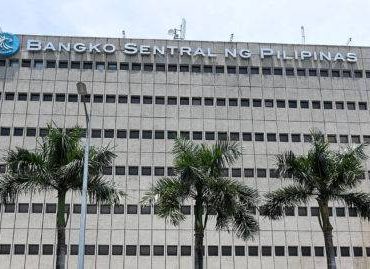Why the peso will continue to fall

The recent appreciation of the peso has provided a temporary boost to the stock market, leading the Philippine Stock Exchange (PSE) Index to rally and challenge higher resistance levels above 6,700. However, despite the current wave of optimism, we need to recognize that this strength is primarily driven by short-term market dynamics.
Several underlying fundamental and structural issues suggest that the peso appreciation is unlikely to be sustainable in the long run. Once the correction in the exchange rate stabilizes, the peso is expected to weaken again.
There are several reasons why the peso will continue to depreciate in the long run. One factor is the persistent trade deficit, which creates a continuous demand for foreign currencies, particularly the US dollar, to pay for imports. When an economy imports more than it exports, it has to sell its currency to buy US dollars, leading to a depreciation of the peso.
If we examine the relationship between the exchange rate and the trade deficit, we find a positive correlation between the two. This means that as the trade deficit increases, the exchange rate also tends to rise and vice versa.
Since 2000, the strength of this correlation has averaged 20 percent. However, if we take a closer look in the past 10 years since 2013, we see that this correlation has significantly increased to 84.6 percent. This means that current fluctuations of the peso are explained by movements in the trade deficit 84.6 percent of the time.
The current account, which includes the trade balance, net income from abroad and net current transfers, also exhibits a similar trend. When a country experiences a current account deficit, it indicates that the nation is spending more on foreign trade than it is earning.
This deficit necessitates borrowing or drawing down reserves to finance it, which negatively impacts the peso. The ongoing current account deficit reflects structural economic issues that are not easily resolved in the short term, which suggests continued depreciation pressures on the peso.
Last month, our headline inflation rate fell to 3.7 percent from 3.9 percent in May, but this is still higher than the US inflation rate of 2.97 percent. When a country’s inflation rate is higher than that of the US, it means that the purchasing power of the peso relative to the dollar is lower.
This often leads to adjustments in the real exchange rate, usually through nominal depreciation, to maintain competitiveness. Higher inflation can lead to depreciation of the peso as foreign investors seek to hold currencies with higher purchasing power and more stable prices.
Currently, the interest rate in the Philippines is higher than in the United States. The Bangko Sentral ng Pilipinas (BSP) has maintained the benchmark interest rate at 6.5 percent following a series of rate hikes aimed at combating inflation and stabilizing the peso. In comparison, the US Federal Reserve’s interest rate is between 5.25 percent and 5.5 percent.
Given the interest rate differentials, if the Philippines cuts interest rates ahead of the US, it could lead to further depreciation of the peso. Lower interest rates would make the peso less attractive to investors seeking higher returns, prompting them to move their funds to markets with higher interest rates like the US. This capital outflow would increase demand for the US dollar, resulting in the depreciation of the peso against the greenback.
Another factor is the risk of political instability and economic uncertainty that can significantly impact investor confidence. Investors typically prefer stable environments, and any perception of instability in the country can lead to capital flight. This outflow of capital reduces demand for the peso and leads to depreciation.
Speculative activities in the foreign exchange market can amplify volatility. During times of uncertainty, speculative selling of the peso can lead to rapid depreciation. Speculators may also bet against the peso if they anticipate further weakening, which often creates a self-fulfilling prophecy.
If we apply the quantitative model derived from the historical movements of the peso and the PSEi, which shows a 62 percent correlation, we can estimate the future levels of the PSEi based on the value of the peso.
Assuming that the peso depreciates to 60:$1 holding other things equal, the PSEi could fall to 6,247. If the peso further depreciates to 65:$1, the index may decline to 5,576. Of course, these are just estimates. The actual PSEi values could be lower or higher depending on market sentiment.
Market history suggests that rising currency risk from peso depreciation could lead to a stock market decline. As the peso is expected to weaken, investors might consider taking profits and exercising caution in anticipation of further depreciation. INQ Henry Ong is a registered financial planner of RFP Philippines. Stock data and tools were provided by First Metro Securities. To learn more about investment planning, attend 108th batch of RFP Program this July 2024. To register, e-mail info@rfp.ph or text 09176248110. INQ

















